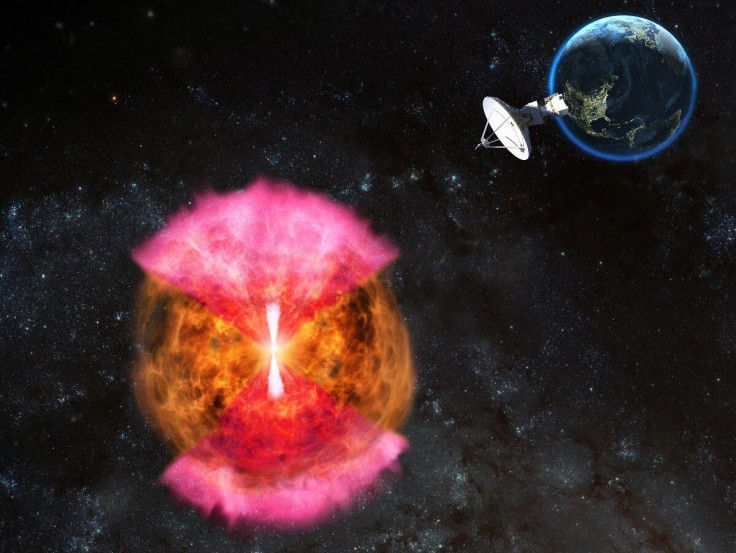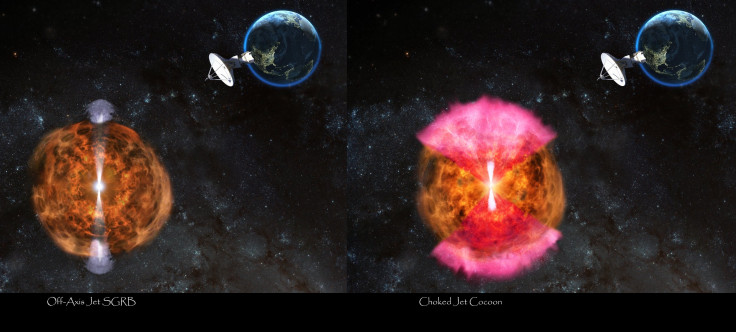Neutron Star Merger Produced Debris Cocoon That Absorbed Resultant Black Hole Jet

When scientists observed, for the first time, the merger between two neutron stars in August 2017, it opened up a whole new chapter in the field of astrophysics. As observations of that object (named GW170817) have continued since, scientists proposed in a paper published Wednesday that the merger produced a cocoon made from the debris created in the collision, and that the cocoon absorbed some of the energy that was otherwise expected to be detected by human instruments.
Using data collected over three months by three radio telescopes in different parts of the world — the National Science Foundation’s Karl G. Jansky Very Large Array (VLA) in New Mexico, the CSIRO Australia Telescope Compact Array and the Giant Meter-wave Radio Telescope in India — astronomers confirmed a theory which predicted the cocoon formation model in the aftermath of the neutron star merger.
This model was proposed to explain some anomalies that other models showed when it came to the intensity of radio and X-ray emissions from the merger event. After the two stars merged, they likely collapsed into a black hole, while the resulting explosion — called a kilonova — created a large spherical shell of debris that moved outward. As the black hole’s gravity accumulated the debris toward itself, the material formed a rapidly spinning disk that generated two jets of superfast material, which flowed outward from the black hole’s poles.

If either of those two jets pointed directly toward Earth, it would have been observed as a short-duration burst of gamma rays, which were not observed following the merger. A proposal of one of the jets pointing slightly away from Earth also explained the fact that radio and X-ray emissions were observed with a slight delay following the collision. But those emissions should have become weaker over time, whereas they were seen to be getting stronger instead.
Enter, the cocoon model, first proposed in October by Caltech’s Mansi Kasliwal and her colleagues. This model posits the jet doesn’t make it to the Earth, or even near it, at all, because it gets trapped in the debris of the explosion. As it moves outward, it gathers up the debris and shapes them into a cocoon that absorbs the jet’s energy.
“The cocoon scenario can explain the radio light curve of GW170817 as well as the gamma rays and Xrays. It’s the one most consistent with the data,” Tara Murphy from the University of Sydney and the ARC Centre of Excellence for All-sky Astrophysics, who was a coauthor on the new paper, said in a statement Wednesday.
Kunal Mooley, a postdoctoral fellow of the National Radio Astronomy Observatory (NRAO), was lead author of the paper which appeared online in the journal Nature, under the title “A mildly relativistic wide-angle outflow in the neutron-star merger event GW170817.”
“The gradual brightening of the radio signal indicates we are seeing a wide-angle outflow of material, traveling at speeds comparable to the speed of light, from the neutron star merger,” he said in a statement on the NRAO website.
Researchers said finding evidence in favor of the cocoon model also increased the number of future detections of collisions between neutron stars, because astronomers won’t need to rely on gravitations waves alone, but could electromagnetic waves too.
© Copyright IBTimes 2024. All rights reserved.











